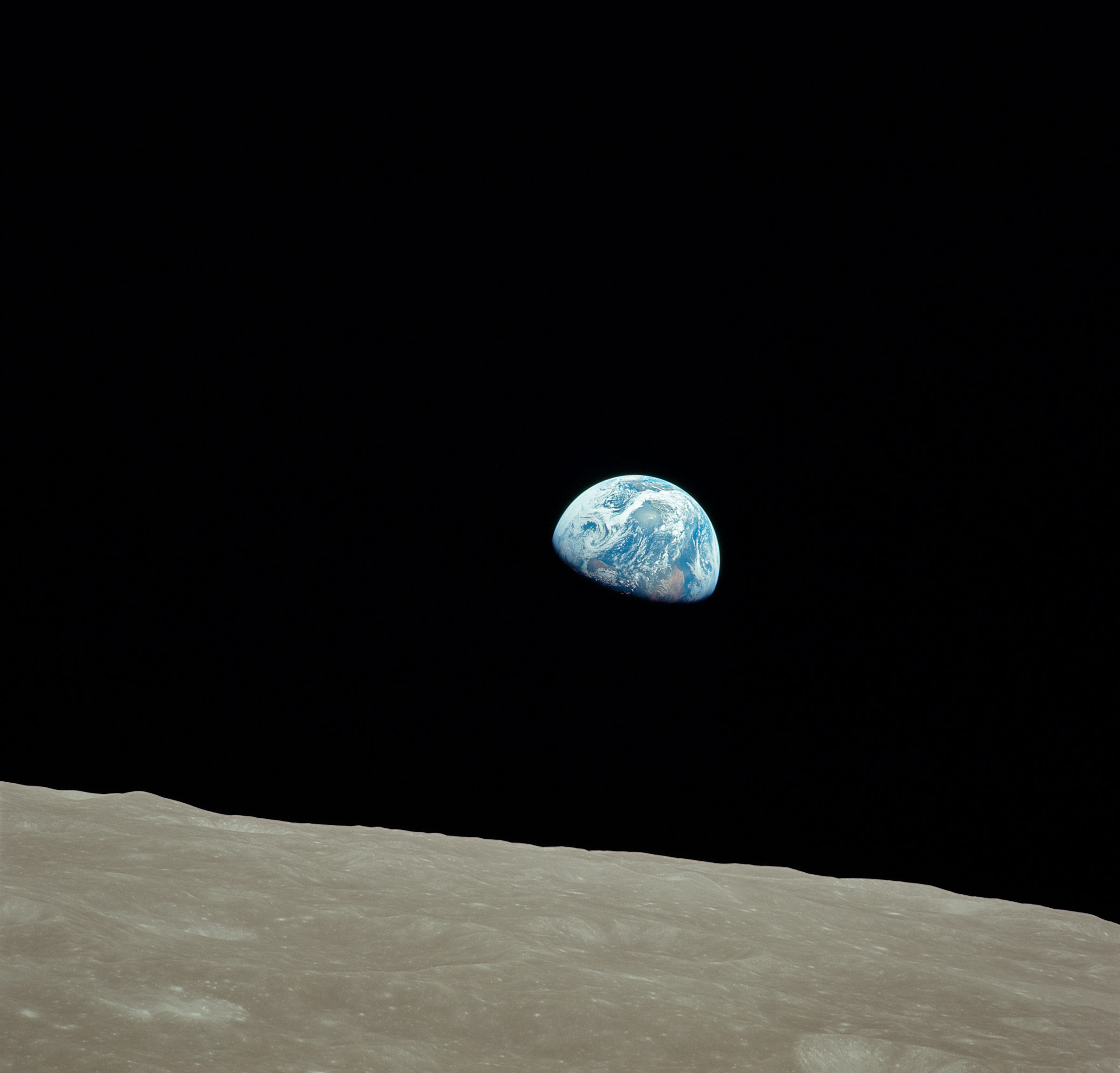Total Immersion in the Heavens
Why Earthrise Resonates 50 Years Later
Casey Dreier is chief advocate and senior space policy adviser for The Planetary Society.
The quarter Earth floats suspended, crisp above a horizon of dull gray. Pale blues are interrupted by smears of bright clouds, with primal black everywhere else. The photo of Earthrise over the Moon, taken in an impromptu moment by Bill Anders, brought home the fact that we’d really traveled beyond the Moon for the first time 50 years ago. Apollo 8 commander Frank Borman, a nononsense military man, later reminisced that looking back at our home planet was like a “total immersion in the heavens.”

The photo appeared on the front page of The New York Times on 30 December 1968, 3 days after the command module splashed down in the Pacific. Life magazine devoted a 2-page spread to the photo that January. The Apollo 8 crew gave copies to political leaders around the world during their goodwill tour. It briefly occupied a prominent spot on the wall of the Oval Office.
Perhaps no other image of Earth has been as famous. Apollo 17’s whole Earth image, taken 4 years later, became the go-to representation of our home planet in textbooks for decades, but it lacked the social and cultural impact of Earthrise. Voyager 1’s view of Earth as a pale blue dot captured the public imagination, but that arguably had more to do with Carl Sagan’s poetic words than the grainy photo itself. Many other spacecraft photographed their planet of origin over the years, but none have dislodged Earthrise from its cultural pedestal. (For some of these photos, read “Spacecraft Earth”.)
Why is this image so iconic? Timing, for sure. It was the first taken by humans so far from Earth. It arrived at the end of an ugly year marred by warfare, assassination, and cultural upheaval. Its depiction of a delicate Earth ensured its adoption by the nascent environmental movement.
However, there is more to it than timing. The photo resonates because we know that human hands held the camera, that human eyes were looking through the lens, and that a human being was capturing a picture of his home. The subject of this photo is not only Earth; it is our relationship to Earth as seen through the eyes of Anders, Borman, and Lovell.

Tension permeates this photo. Blue Earth contrasts with black cosmos and the living planet with the lifeless moonscape. We, the Earthbound viewers, see it first as a photo of Earth—of us—but then through the eyes of the astronaut himself—of Earth without us—and snap back. Earthrise vibrates with this tension because of the human being who took it.
The Moon and other destinations continue to call to us. Perhaps we will once again respond to that call and allow ourselves the grand perspective we so desperately need.
Support our core enterprises
Your support powers our mission to explore worlds, find life, and defend Earth. You make all the difference when you make a gift. Give today!
DonateThe Planetary Report • December Solstice
Help advance space science and exploration! Become a member of The Planetary Society and you'll receive the full PDF and print versions of The Planetary Report.


 Explore Worlds
Explore Worlds Find Life
Find Life Defend Earth
Defend Earth


